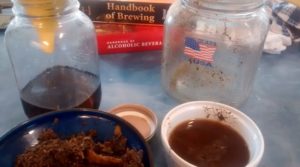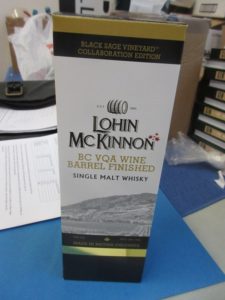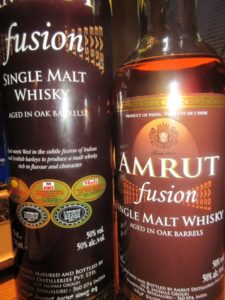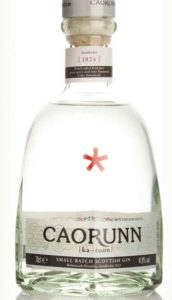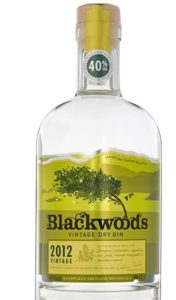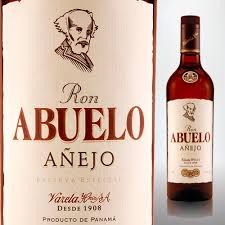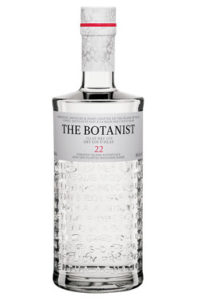Thanks to some British sensibility, my faith in Spirits Awards is now partly restored. The World Drinks Awards in my humble opinion appears to be on the track towards doing it right. Entries are slotted into their various categories and then each category judged once to weed out products that do not conform to expected characteristics. Surviving products are judged again to further whittle down the list. And then again to identify the category winner. There is none of the usual suspect nonsense of 19 people in a category all taking Gold, 23 people taking Silver and so on. In my travels, if I see a craft distiller ( or a distiller in general) who has won at this British event, I will definitely pay close attention to that product….
Category Archives: Distillery Marketing
Vermouth – This Ain’t from the Liquor Store…..
Next time you stop at your local Liquor store, ask the product advisor how many bottles of Vermouth they sell in a typical month. The number I assure you will be a small one. People simply don’t know what to do with a Vermouth, other than to spritz a wee bit into a Gin cocktail.
I just finished another of my wild experiments – this one to make Vermouth. I started with a quantity of Vodka. You can obviously buy your Vodka at the Liquor store. In my case, I take a slightly different approach which I shall not discuss here. I added a litany of herbs that I sourced at Herbie’s Herbs in Toronto, Canada. Look around your community and you will find a purveyor of herbs and spices. The list included the likes of Wormwood, Thistle, Mint, Angelica, Cinnamon, Nutmeg, and Gentian. I soaked the herbs in the alcohol for 20 days. I then strained the concoction through a coffee filter. The resulting dark liquid was then blended into some white Gewurtztraminer wine that I had sourced from my local U-Vin store. The ratio of herbal liquid to wine was 1 part herbal to 5 parts wine, but you can adjust that to your liking. I then added 0.8 parts simple sugar syrup for every part of the herbal liquid. Again, you can make minor adjustments to suit your taste buds. By my math, the resulting product measures about 15% alc/vol. On a nice Summer day, a generous dram of this Vermouth with an ice cube is just what the Doctor ordered as far as I am concerned.
In your travels to craft distilleries, start inquiring whether they have a Vermouth type product for sale. If not, share this post with them. Or…make your own Vermouth. Life is too short to not have a nice Vermouth on hand….for those relaxing occasions on the deck during the Summer. For recipe details, get in touch with me.
Lohin McKinnon Craft Whisky – The New Benchmark
Lohin McKinnon Craft Whisky. Remember that name. It is going to set a new benchmark for Canadian craft Whisky.
This Whisky is what happens when a brewer and a distiller (both of whom understand the science of what they are doing) start collaborating. I really cannot emphasize this point enough. The craft distilling movement in Canada has seen far too many people rush in with zero scientific knowledge. What’s more – there seems to be a reluctance to learn at a deeper level. As I stress in my recently released 3rd edition of Field to Flask, the craft movement will remain stuck in neutral until some better products are released based on a deeper grasp of the underlying science. I find it hard these days to contain my laughter when I see craft distillers adding wood cubes and burnt sticks to make their fresh-off-the-still product turn brown. This is what I bluntly refer to as piss in a bottle.
Lohin McKinnon Whisky has been aged for about 4 years (as near as my simple math tells me) and it is starting to show good signs of body, texture and subtle, elegant flavors. As I note at the outset, this product is going to set the benchmark for craft Whisky. Those that cannot aspire to this level of performance will perish into the mists of failure. And so it should be.
I am a bit disappointed to see it being released so soon because it will only get more excellent as it continues to rest in the cask. I do hope their plan is to leave the bulk of it age longer. Try it now for sure (you will be impressed), but give this product a few more years in the cask and it will be a highly sought-after prize by serious Whisky connoisseurs in Canada. I have now added this Whisky to the tasting lineup in our 5 Day Distilling Workshops
You Gotta’ Try – Amrut Malt Whisky from India
I say India……you say curry, Taj Mahal, Bombay, Bollywood….
You say India and I say wow!!! … Indian Whisky.
In our 5 day Distilling Workshops I delve deep into the chemistry that occurs in an oak barrel during ageing. I talk about the effects of temp and humidity on these chemistry processes. Now, I have tasted the science that I talk about. Amrut Indian Whisky is a blended malt (distillate made from smoked malt from UK plus distillate made from non-smoked malt from Himalayan foothills of India) aged in oak casks for a max of 4 years in the hot, humidity of India. You simply have got to try this stuff. I paid $92 in Kelowna, BC and have seen it for $150 in Calgary – so shop carefully. Add water to open up the flavors and prepare to be amazed. Enticing bits of smoke, sweetness, maltiness and even some fruitiness will tease your palate. Amrut is taking the world by storm…and now I know why. After trying this excellent creation, you may find yourself drinking it on a regular basis….
English Gin – No Thanks! …. You Gotta Try These Scottish Gins…..
There is quite a rivalry going on amongst Gin makers here in the UK. Much like the Calcutta Cup Rugby game the other day between England and Scotland where Scottish pride was evident, the Scottish are taking great pride in their Gins. I had the opportunity to sample two more creations yesterday at a quaint little pub in the Haymarket area of Edinburgh called Ryries.
The first one – I am sure you have had it – was Caorrun Gin. Straight up, room temperature, I got the juniper forward aroma which then ushered me into a nice rounded mouthfeel where I thought I could detect apple. Turns out – I was correct, Caorrun contains apple in its botanical mix.I am told that a good way to navigate Caorrun is straight up, room temperature with a slice of apple in the glass.
The second one I tried was Blackwoods. Never heard of it before. It’s claim to fame is that some of its botanicals ( meadowsweet, cowslip, wild thyme, eyebright) are foraged from the Shetland Islands. Very nice, well rounded when approached straight up at room temperature. I am told that it pairs well with some (not all) of the Fevertree tonic offerings. ch
Clearly I have more research to do when I come back to school here in Edinburgh in August. Meantime, I managed to snag the last seat for a Gin Connoisseur class at Edinburgh Gin later today. But, before I head off to that, it is time to hit the books again. The McCabe-Thiel mathematics of still column plate approximations beckons…
Glengoyne Distillery – You Have to Visit Here
So…..21 years ago I was getting set to marry my sweetheart. In fact April 5, 2018 is our 21st Anniversary. Shortly afterwards, she advised my she was heading to Glasgow, Scotland for a Rotary International Conference. When she came home she was raving about this place called Glengoyne that she had visited. Something about tasting drams of Scotch at 10am in the morning…and I was told it was a Rotary Conference she was at! Hah!!! To this day, Jeanne still talks about her visit to Glengoyne and in fact expresses a preference for only Glengoyne Scotch. So, here I am in Edinburgh at school right now ( Heriot Watt University – Brewing & Distilling). Today is my 54th Birthday and as a treat to myself, I took the train from Edinburgh to Milngavie and a bus to the front door of Glengoyne Distillery. I was met by the beautiful and charming JoAnne who would be my tour guide. When she found out I was studying at Heriot Watt, she opened up to me and shared all sorts of excellent technical information with me. Quite the opposite from the treatment I had last October at Blair Athol Distillery…but that is another story for another day.
I had a chance to blend my own Scotch using cask strength samples of various ages from various barrel types. This was called the Malt Master Tour and I highly advise it. The tour of the Distillery was top shelf all the way. Now I know why my dear wife was so impressed 21 years ago.
If your travels take you to Scotland – you just have to visit Glengoyne Distilling. Get yourself to Glasgow. From there, either take a train or a bus to the town of Milngavie (locals call it Miln-Guy). From there take bus B10 to the front door of the Distillery. Ask if JoAnne can give you the tour and as I say – give serious thought to spending some $$$$ and doing the Master Malt Tour. You will come away with a whole new appreciation for Scotch. You will also start to understand why our Canadian Whisky distilled to 95% ABV is total piss! I dare say, after a visit to Glengoyne, your Whisky sipping will take on a whole new dimension.
My goal now…..dare I say it…..is to contact the owners of this fine location and see if I can arrange for a 3-4 month work opportunity. That would be like a dream come true……
Abuelo Rum – You Have Got to Try This !
Recently when reading Dave Broom’s Rum-The Manual book, I noticed that he had a profile for Abuelo Rum from Panama. Funny how things happen – I am in Panama at the moment and I am seeing small bottles of Abuelo Rum (Anejo) in stores for $2.
How good can $2 Rum be? Well… surprise, surprise. This is some of the most wonderful Rum I have had in a good long time. It puts to shame the products from the big name, global purveyors of Rum. The brand is owned by a company called Varela Hermanos, S.A. Its history dates back to 1908, when Don José Varela Blanco, a young Spanish immigrant, established himself in the town of Pesé in the central part of Panama. He built a sugar mill, the first such mill in the recently formed Republic of Panamá.
The rest as they say, is history. Today, Abuelo has its cheaper $2 anejo version, plus a 7 year old expression plus a 12 year old expression and now a release that is blended with 30 year old rum.
If what I am tasting in the cheaper anejo stuff carries forward into the longer aged 7 and 12 year olds, I think it is time to go shopping for another suitcase. A goodly amount of Abuelo is coming back to Canada with me.
The Botanist Gin – What’s Up ??
For those of you that now know me, you will appreciate that I tell it as it is. I do not tip-toe around big brand names showering them with fancy descriptive adjectives. This is why you will never see my comments in the big global spirits magazines. I am a non-conformist in the eyes of the big name spirits brands. However, I do believe in giving high praise when it is due. Give me an excellent spirit and I will write glowingly about it in no uncertain terms.
Now, to the point of this post. Yesterday I was in the grocery store here in Panama City. My wife wanted some Gin and the selections were sparse at best. Hard liquor is not a big seller here in this hot climate. As I was reaching for the Gordon’s Gin on the top shelf, I spied on the bottom shelf a bottle of Botanist Gin. Sampling this Gin has been on my list of to-do’s for a while now, so I thought – why not here, why not now?
We quickly rushed back to our rented apartment and poured ourselves each a wee dram, straight up at room temperature intent on savoring the bouquet of 22 botanicals that comprise this product. Shockingly…my senses were assaulted with the overwhelming aroma of solventy, feinty alcohol. No juniper-forward notes. No hints of citrus in the background. Just plain un-appealing to our palates.
I then tried adding some Tonic (Schwepp’s to be exact), thinking that maybe a G&T was the way to enjoy the Botanist. I thought maybe the Tonic would tease out the flavors of some of the 22 botanicals. No such luck. I now had a G&T with notes of feinty alcohol. My wife’s first reaction was to suggest that maybe this bottle had been distilled and prepared under licence by a distillery in Central America who had botched the recipe. I quick look at the bottle showed that no – this was a product of Scotland.
I am seriously under-whelmed with the Botanist. What’s more – I am perplexed because I have had people in the 5-day Distilling Workshops that have spoken of the Botanist Gin in hushed reverence like they were describing their admiration for the Queen of England.
In all fairness, I will again sample the Botanist somewhere in Canada. For here and now, I am going to hold to the idea that this was in some way a bad batch. I will keep you apprised…..
Cheers
Brown Colored Piss in a Bottle
To be very frank – I am growing increasingly more worried about the state of the craft distilling movement all the time. The urgency to get a product to market is doing the craft movement no favors at all. The vendors that play into this urgency need to dial it back. Case in point – craft distillers have discovered that they can buy staves and cubes and chips of toasted oak from a number of N. American sellers and toss this crap into a tote of distillate. After 3-4 weeks….et voila….Whisky !! But, it is not Whisky. It is brown colored piss in a bottle. Craft distillers then run around blathering about small batch, handcrafted and somewhere in there is usually a colorful marketing tale about someone’s grandfather being a gun-totin’, cattle-rustlin’ Moonshiner. To the consumer – all of this is very new and very attractive. But, if the whisky is piss in a bottle, how does that benefit the consumer? How does that benefit anyone? Sadly, there is a reluctance on the part of craft distillers to embrace science. Maybe it is more of a fear? Who knows. My message in all of this is – you do not have to be enrolled in a M.Sc. program at Heriot Watt to understand the science. You do not even need to be enrolled in the IBD exam offerings. All you need do is read a basic book on Microbiology and then apply some of what you learned to reading scientific papers. And these papers are readily available to you. Case in point – last evening I went to Google Scholar and typed in something about Oak Aging and Whisky. Next thing you know I was pulling out my credit card and spending $10 to buy a 1981 research paper written by a gentleman at the Seagram’s Research Center in Kentucky (back when Seagram’s actually still owned production facilities). A read of the paper reveals some key mechanisms. In an oak barrel, ethanol oxidizes to acetaldehyde and thence to acetic acid. It is the combination of the acid and ethanol that generate esters (flavor and aroma). The wood lignins break down under the influence of ethanol into aromatic aldehydes. The hemicelluloses break down into various polysaccharides that impart sweetness to a Whisky. Adding distillate to the barrel at between 55% and 65% is shown to be the optimal strength. Add the distillate at higher proof and you accomplish nothing. Charring of the oak alters the celluloses and hemicelluloses and makes them more reactive with the ethanol. Hence, charred barrels will deliver a better flavor profile. Time in the oak is also key. A good amount of the color and flavor is developed in year 1 of aging, but the extraction of color and flavor continues for years on end. The temperature of the aging room affects the extraction of color and flavor too. Age at a warmer temperature and the relative proportions of esters and aldehydes will shift. Hence temperature can be used to help a distiller arrive at a desired flavor profile. Re-using a barrel again also is a risk. I see a lot of craft people running around wild-eyed and crazed in search of used barrels from Jack Daniels. Hello? Jack Daniels has already used that barrel for maybe 6 years. Adding your distillate and leaving it sit will earn you nothing. The barrel needs to be re-furbished. I saw this recently in Scotland where it was made very clear to me that the incoming used Bourbon barrels from the USA are sent to a cooperage in Inverness for refurbishing.
So this whole reading process of this one 1981 paper took me all of an hour and the information gleaned is amazing. With such data and information so readily available to us in this information age, why take shortcuts by adding sticks and cubes and staves to distillate? Embrace the science and make a truly fantastic product. Take that truly fantastic product and wrap it in the story about your gun-totin’, Moonshinin’ ancestor and believe me you will have people breaking your door down to buy your Whisky. Then, the big commercial distillers will really have something to fear….
Philosophical Thoughts on Whisky in Canada
This we trip to Scotland has given me pause for thought. I am struggling with the question – what is whisky?
Technically it is an alcoholic spirit beverage made from barley and other cereal grains. But, the bigger issue is how is it made and to what degree is it elevated?
Technically the definition for Whisky in Canada says that aging 3 years in small wood earns one the right to call it a Canadian Whisky. There is nothing that sets any restrictions on ingredients. A Canadian distiller could use barley, wheat, corn, rye, oats…etc…
The generally accepted protocol seems to be for a big commercial distiller in Canada to bring the distillate off a column still at 95% (almost a Vodka-like material) and then blend that base with distillates of other grains that are perhaps less than 95%. After that, it all gets aged in small wood (casks less than 700 liters), which are oak for the most part. Where this column still notion came from, I do not know. What drove the urgency to create a spirit so clean that it only needed 3 years of aging, I do not know. The 3 years in itself seems to hearken back to Canada’s days as a British colony where the Brits set the laws. But the 3 years is simply a minimum. The urgency is then further added to when one realizes that by Canadian law we can actually add up to 9.09% of other stuff (including wine…) and caramel color. Add artificial flavor and the law says only 2 years of aging is needed. So the next time you are having a Canadian whisky – ask yourself what are you drinking. If the label does not explicitly say how old it is…you might be shocked at what is in that libation. Now I understand why 2 years ago when I was at a spirits conference in London, speaker Dominik Roskrow went on a wicked tirade against Canadian whisky makers, whom he regards as a bunch of mad laboratory scientists.
In Scotland, technically 3 years is also required. But, so many of the distillers have stayed true to the old method of distilling using goose-neck pot stills and then aging for 10,12, 15 years and more. Somehow, this artistry got lost when Canada became a nation.
In the USA, the artistry was partly maintained as the USA became its own nation in 1776. US law demands that bourbon, for example, shall come off the still at 80% or less. Then, law further states that a “new” oak cask shall be used. Then law says the maximum alcohol strength in the aging cask shall be 62.5%. Then the law says, age it 4 years minimum or face the embarrassment of posting an age statement on your label. This has served to elevate the status of American bourbons and whisky’s on the word stage.
And now we have the craft distilling revolution unfolding before our eyes. Craft distillers are relying on our lax laws and are calling their whisky products grain mashes, moonshines, spirit drinks. Some have even found a weakness in the law that technically allows one to call it whisky without even aging it. Excise Canada officials are trying hard to get that “horse back into the barn”. What worse, I see craft distillers now throwing oak sticks and chips into a container to give their so-called whisky some color and oak notes in a hurry. Add some toasted oak chips to some clear distillate sometime and count the days until the liquid is brown, to see what I mean…
These craft distillers, in my not so humble opinion, are making PISS IN A BOTTLE. I am growing ever more worried that the craft movement is going to collapse under its own weight. Consumers in this day and age of readily available information via the internet and easy travel opportunities are getting savvy quickly. I fear they are going to turn their back on craft if craft does not move fast to understand the science behind spirits making. As I caution people in the Distillery Workshops, “Betty Crocker has left the building”. In other words, if you think that making spirits is like baking a cake out of a cardboard box, then maybe craft distilling is NOT for you.
I am now seeing a rumbling of sorts coming from at least one of the big boys. Pernod Ricard owns the Wiser’s brand name and their Vice President is Don Livermore. By the way, Dr. Livermore obtained his pH.D. from Heriot Watt where I am currently working on my M.Sc. Dr. Livermore was quoted in a recent edition of Quench magazine as saying he “hates craft”. I say look out! This is a man who understands the science and who has the corporate horsepower to start bringing some uniquely innovative products to market that will take a nasty swipe at the idea of craft.
So craft people, I say the time to bid farewell to PISS IN A BOTTLE has come. It is time to play the long game and start making whisky that is properly nurtured. The French even have an expression for this. They call it ‘elevage’, meaning to raise or nurture. Forget about running to vendors looking for oak chips from old Scotch barrels and old Bourbon barrels. Get off your lazy asses and embrace science. You want some smokiness in a whisky? Buy some smoked barley with a high phenol content and add it to your mash. How much to add? You figure it out. Betty Crocker has left the building. Better yet, build a little cold smoker and smoke your barley with local woods from your area. Want something that tastes like Bourbon? Never mind adding chips and stuff. Figure out a mash that will give you a nice tasting Bourbon. Better yet – read my book called The Recipe. I give you all that you need. In short – start playing the role of the craftsman. That is what craft distilling is all about. It is not about cutting corners and trying to sneak one by the consumer. The customer is still early in his relationship with craft. Based on the number of craft distillery failures I am now starting to see in the USA, I say this relationship is about to go through a rough spell, even here in Canada.
On on this dire note, I have a wee dram of 15 year old cask strength calling my name. If I listen carefully, I think I can hear choirs of angels singing….


